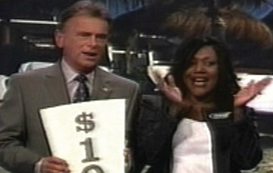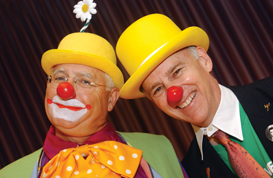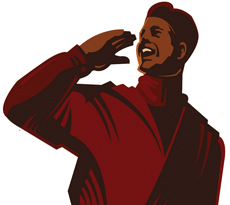A movie about life
By Wayne Wood
I like old movies in black and white: “Citizen Kane,” “Casablanca,” “City Lights” with Charlie Chaplin falling in love with the blind girl, great comedies like “A Night at the Opera” and “Duck Soup” with the Marx Brothers or “The Bank Dick” and “It’s a Gift” with W.C. Fields. Some people think—and I’m looking at you, Academy members—that comedy is not “real acting,” and that’s why geniuses who can simultaneously do great comedy and brilliant social commentary, such as Fields and Groucho Marx, are seldom recognized as what they were, great actors. Movies that make me laugh as hard as “There’s Something About Mary,” “Used Cars” or “Matinee” are among my favorites, even if they aren’t cinematic landmarks. When people are laughing they don’t feel pain, and that’s why people who have the skill to make others laugh are among the most valuable artists on earth. See the movie “Sullivan’s Travels” to see what I mean.
I like newspaper movies: “Deadline USA,” with Humphrey Bogart, “His Girl Friday,” which has some of the best movie dialogue ever, and “All the President’s Men” still makes me proud to live in a country where the First Amendment means that we can hold even a president to the law.
I like suspense movies: Alfred Hitchcock’s “Rear Window;” “Sorcerer;” “House of Games,” which was written and directed by David Mamet and will have you twisted in a knot by the time it’s over; “Diabolique,” the French thriller that does for bathtubs what “Psycho” did for showers.
I like Westerns: Gary Cooper in “High Noon,” Robert Altman’s “McCabe and Mrs. Miller,” “The Man Who Shot Liberty Valance,” with James Stewart and John Wayne, which has as its subject no less than the philosophical question of how do we know what we know, and what happens when what everybody wants to believe doesn’t quite square up with the facts.
I like movies with big plot twists: “The Usual Suspects,” “Taxi Driver,” “Fearless,” “The Sixth Sense,” the diabolically plotted “Blood Simple,” which was the Coen brothers’ first movie.
If a movie is good, it doesn’t bother me to read subtitles, so I like a lot of movies from other countries: “The Seventh Seal” from Sweden; “Belle de Jour” from France; “Ran,” Japanese director Akira Kurasawa’s great retelling of the King Lear story, with some of the most majestic and horrible battle sequences ever filmed; “Wings of Desire” from Germany. And speaking of Kurasawa, his movie “Ikiru”—Japanese for “To Live”—is one of the most heartbreaking and uplifting movies I’ve ever seen.
I like sentimental movies, too: “Love, Actually,” with Hugh Grant, is a terrific movie about love and romance. So, in their own ways, are “It’s a Wonderful Life” and “Terms of Endearment.” One year on our vacation Sharon and I buzzed through a bunch of Doris Day romantic comedies and had a great time.
I like horror movies. There is nothing better than being in a crowded theater full of people enjoying being scared to death by something as fun as “The Blob,” “Halloween,” or even something as cheesy yet terrifying as the original Vincent Price “House of Wax.” And you know what? It’s also creepy fun to be alone in a dark house with one of these movies on TV, when suddenly every swaying tree limb in the yard and groan of the house settling is nerve-jangling.
And as soon as this column goes to press I’ll slap my forehead and say that I can’t believe I left out another dozen favorite movies that are slipping my mind right now.
But here’s one that I am thinking of, and that I can recommend as strongly as any other one on the lists above. It’s called “49 Up,” and it’s one of the reasons Edison invented the movie camera, even if Edison didn’t know it at the time.
The movie began in 1963 as a television documentary in England called “7 Up.” The idea was to interview some children who were then 7 years old and talk to them about their ideas, dreams, what they want to do when they grow up, all kinds of stuff. The producers made an effort to get a variety of kids, so some were children of rich parents, some were poor kids from a children’s home, some boys, some girls. The intent of the documentary was to show what the country was going to be like in the year 2000, since these children and their peers would be the ones running things by that far-off magical date.
But one of the filmmakers working on the original documentary in 1963, Michael Apted, got the idea of checking in with the same kids seven years later, when they were 14. And he made another movie, this one called, predictably, “14 Up.”
So you see where this is going. Those kids from the original black and white film, are now 49 years old, and have been interviewed about their lives every seven years since 1963, each time for an updated movie. I first saw them at 21, and have followed their path through life, catching up every few years as a new movie comes out. (Of the original 14 kids from 1963, all are still alive and 12 are still agreeing to interviews).
How much of the adult is in the mysterious gaze of the 7 year old schoolchildren squirming on the couch, their words tumbling over each other to answer the questions of the interviewer? Is the pattern of the adult’s life set before the child is even old enough to cross the street on his own? Part of the beauty of this movie is the way these big questions of life are dealt with, not through foggy generalities, but through real lives.
Skillful interviewing by Apted and skillful editing shows us snippets of each child at 7, 14, 21, 28, 35, 42 and now 49. It is fascinating to see these children become middle-aged adults, and to go back with Apted to trace how their dreams have worked out, or not, as they have made their way through life. To paraphrase Roger Ebert, the subject of the movie becomes, not these individual lives, but life itself. Through these ordinary people, as they marry and sometimes divorce, as they have children and then worry about those children, as they search for their identities, professions, and sometimes even their sanity, these people represent a microcosm of some of England in the last 50 years, and some universal experiences of being human.
So, I still love “Citizen Kane” and “A Night at the Opera,” but one of the greatest movies I’ve ever seen is this documentary that traces these ordinary lives as they cope with these extraordinary times.
(Wood is editor of House Organ, Director of Publications for VUMC, and author of Watching the Wheels: Cheap Irony, Righetous Indignation, and Semi-Enlighted Opinion, which is a collection of past columns.)
|
Marsha Moore
Spins the Wheel
Anesthesiology's Marsha Moore won almost $19,000 on "The Wheel of Fortune."
The inside story of a game show winner. |
 |

|
These Lawyers are a couple of Clowns
John Bairdry and Doug Hale, a.k.a. Pockets and Bow Tie, bring healing humor to children. |
Health Plus
America on teh Move seeks to,
well, get you moving. |
 |
|
Perq it up
Because you work here,
people want to give you money. |
Call for Entries
23rd Annual House Organ Writing Contest
* Deadline May 11* 
For the 23nd year, the July House Organ will be the Summer Reading Issue, filled with the winners of the House Organ Writing Contest—poems, short stories and nonfiction pieces contributed by staff, faculty and students of VUMC.
Every year demonstrates that the Medical Center has a lot of people with literary talent walking around disguised as regular people, and the House Organ Writing Contest is a chance to show everybody what you can do.
The rules are pretty simple.
There are three categories: poetry, fiction and nonfiction.
There are no length restrictions in the poetry category.
The fiction category is limited to 4,000 words.
The nonfiction category, which encompasses journalistic writing, memoirs, feature stories, historical pieces, profiles of interesting people, or anything else that’s true, also has a 4,000-word limit.
Please indicate the category of your entry; sometimes it’s a little hard for the judges to figure out what is fiction and what is nonfiction.
All staff and faculty of VUMC, except those who work in News and Public Affairs, are eligible. Medical, nursing and graduate students are also eligible.
Submissions are limited to three per category. Each entry must be typed, double-spaced, and have the author’s name, place of employment or school, and a phone number on the first sheet, OR may be e-mailed, with the same information, to wayne.wood@vanderbilt.edu. Please put “writing contest entry” in the subject line.
E-mailed entries should be either included in the e-mail by using the cut-and-paste feature, or may be sent as an attachment in Microsoft Word.
Entries will not be returned, and may
be edited for space, clarity or style before publication.
Deadline for entry is Friday, May 11. The entry must arrive by the deadline date.
The winners will be published in the July House Organ. If we have room, we’ll also publish some honorable mentions.
Send entries to the e-mail address above, or to:
House Organ Writing Contest
D-3237A Medical Center North 2390
Address any questions to the editor, Wayne Wood, at the e-mail address above.
Checklist for entries:
• Author information: Name, department or school, address and phone number.
• Entry information: Category—fiction, nonfiction or poetry. Check to be sure your work is within the length requirement.
• E-mail entries must be submitted by cut-and-paste into the body of the e-mail, or sent as an attachment in Microsoft Word.
• Must arrive by Friday, May 11. |